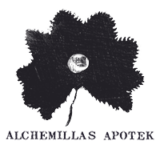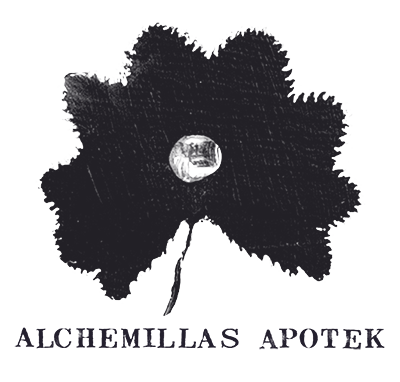Description
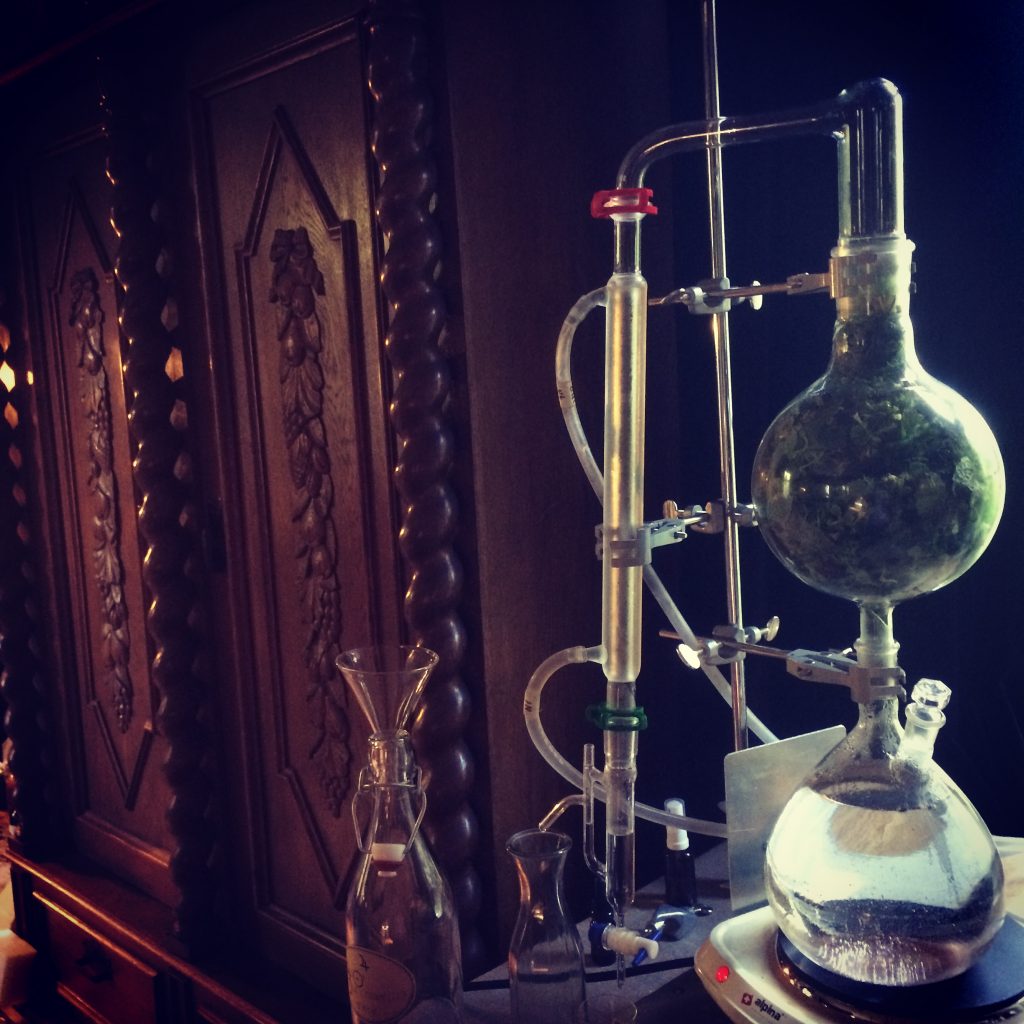
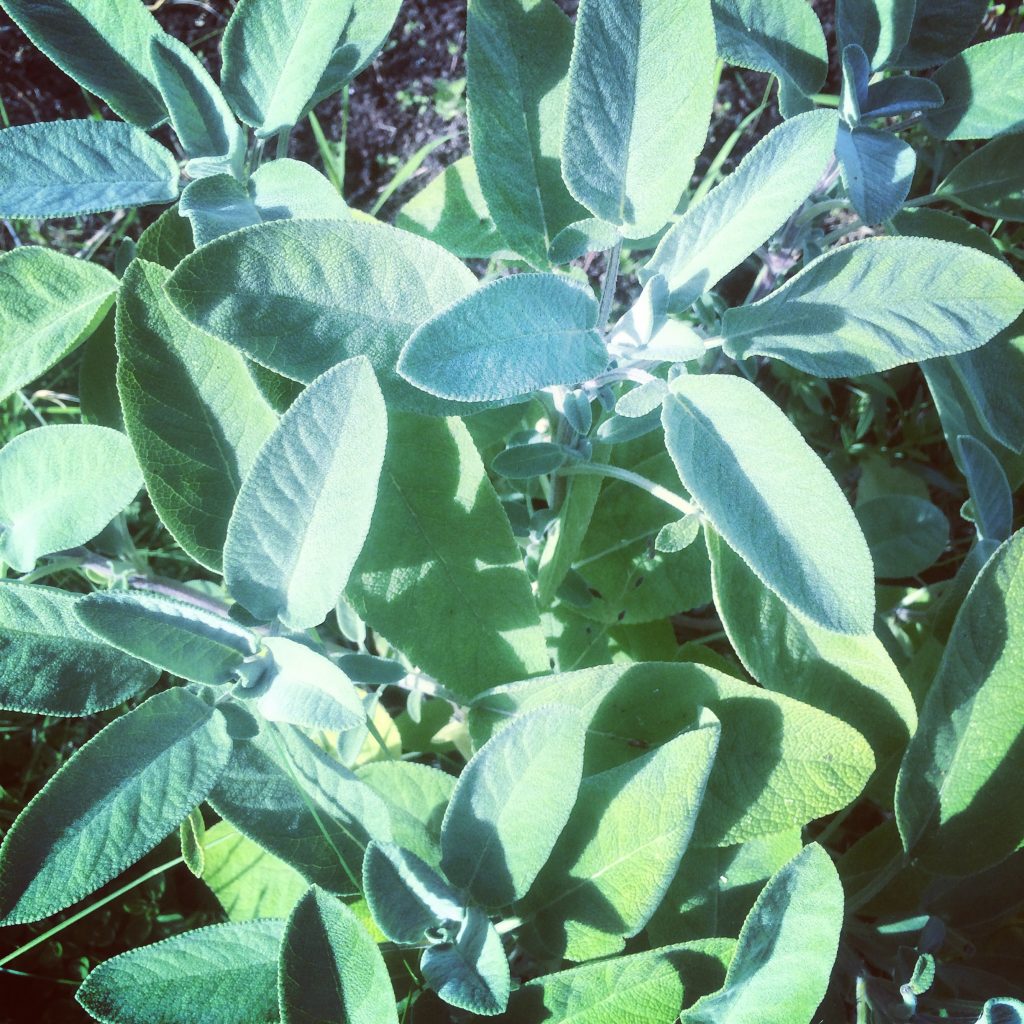
70 kr


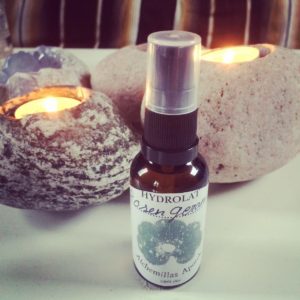
[:en]
Geranium hydrosol will draw moisture to the skin acting as a wonderful hydrator. It makes a beautiful perfume or body spray. Extremely uplifting and balancing for the emotional body.
[:sv]
[:]

[:en]
![]()
Borage is anti-inflammatory, demulcent, nutritive and cooling. It is giving tone to relaxed tissues like varicose veins. It is also used to soothe the body's mucous membranes. Borage can help ease arthritis and rheumatism.
![]()
Borage can be helpful to uplift and strengthen the spirits, especially in times of grief. It is also a great PMS-relief.
![]()
The blue starlike flowers reach an apex, coming to a singular focused point. Borage is excellent for individuals who are scattered in their communication, lack focus and clarity, and are unable to “get to the point”. It can also be useful for people who tend to “beat around the bush” and are not direct with their communication.
Most confusion that occurs in relationships is due to unclear communication and Borage is an excellent remedy to turn to in order to bring more direct, focused and clear communication that gets to the point.[:sv]
![]()
Gurkört verkar anti-inflammatoriskt, fuktgivande, närande och kylande. Den ger stadga åt förslappade vener och vävnader så som åderbråck. Gurkörten är bra för att lindra inflammation, mjuka upp och återfukta slemhinnor och kan hjälpa vid artros och reumatism.
![]()
Gurkört kan vara behjälplig för att lyfta anden och humöret och kan vara ett stöd vid sorg.
![]()
De blå stjärnlika blommorna bildar med sina fem kronblad en gemensam högsta punkt, ett slags fokus. Gurkört är bra för splittrade individer som kommunicerar på ett splittrat vis. För de som saknar fokus och klarhet eller har svårt att komma till saken. Gurkört kan också vara bra för de som tassar kring den metaforiska heta gröten och liksom aldrig gör slag i saken, eller har svårt att vara tydliga och raka i sin kommunikation.
Förvirring och missförstånd uppstår oftast i relationer på grund av oklar kommunikation. Gurkört ger oss stöd i att kommunicera fokuserat, klart, direkt och rakt på sak.
[:]
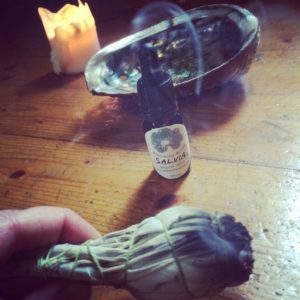
[:en]Sage is for the practicing mystic – I walk my talk
![]()
Sage is used for irritations and inflammations of the throat and respiratory system. Sage has an action on the liver, gallbladder and the digestive system and helps the liver to break down fat. Regulates sweating.
![]()
Purification of the self and purity in communication. Support in delivering our messages. Sage reconnects us to who we are and helps us to recognise wisdom in everything. How each reflection of life is a reflection of our own nature, as we hold the whole universe within our own being.
![]()
Sage helps with integration of the spiritual and the physical worlds together, dissolving the boundary between the mundane and the sacred, helping to bring knowledge into the heart where it can transform into wisdom. Sage is a wise plant teacher of many secrets.
[:sv]Salvia är för den praktiserande mystikern – I walk my talk
![]()
Salvia används vid inflammation och irritation i halsen och luftvägarna. Salvia verkar på levern, gallan och matsmältningen genom att hjälpa levern att bryta ner fett. Salvia hjälper till att reglera svettning.
![]()
Salvia främjar klarhet i kommunikationen. Den stödjer oss att leverera vårat budskap. Salvia hjälper oss att knyta an med vårt sanna jag och att upptäcka visdomen som finns i allt runt om kring oss och uppenbarar att alla reflektioner av livet är reflektioner av oss själva, ty vårat väsen innehåller hela universum.
![]()
Salvia stödjer oss att integrera den andliga och den fysiska verkligheten så den blir till en värld. Den upplöser gränsen mellan det vardagliga och det heliga och stödjer oss att förankra kunskapen i hjärtat där den kan transformeras till visdom. Salvia kan bli en inre lärare.[:]

[:en]“There’s rosemary, that’s for remembrance.” – Shakespeare
![]()
Warming circulatory stimulant, most notably for the head and the brain including circulation to the eyes, therefore good in case of glaucoma. Brings blood to the heart, liver and gallbladder hence also good for digestion. Nervine, helpful in Alzheimers, nootropic, enhancing cognitive function, short and long-term memory. Good for type II diabetes.
![]()
Good for persons lacking confidence to give clarity around who we are, why we are here and what we do with our time here. Rudolph Steiner taught that Rosemary increase the sense of selfhood, which he related to the solar properties or the warmth of the body, to support selfconciousness, especially to be used in the morning to stimulate awareness.
![]()
Rosemary helps us in remembering who we are, to be strong in who we are, to embrace our pasts and presents without regrets. Through remembering via the heart more than through the mind we can reconnect and find support from in our ancestry.[:sv]“Här är Rosmarin, den hjälper oss att minnas.” – Shakespeare
![]()
Värmande och stimulerar cirkulationen, särskillt till huvudet, hjärnan inklusive ögonen, därför bra vid glaucom. Cirkulerar blodet till hjärtat, levern och gallblåsan, därför bra för matsmältningen. Bra för nerverna, vid Alzheimers, nootropisk dvs stödjer kognitiv funktion, korttids och långtidsminnet. Stödjande vid diabetes II.
![]()
Bra för personer som saknar självförtroende och skänker klarhet kring vem vi är, varför vi är här och hur vi ska använda tiden vi har. Rudolph Steiner sa att Rosmarin stärker jagkänslan, som han relaterade till den solära energin som värmer upp kroppen. Rosmarin stärker självmedvetenhet, särskillt när den används på morgonen för att väcka medvetandet.
![]()
Rosmarin hjälper oss att minnas vilka vi är, att vara starka i oss själva, att omfamna det förflutna och nuet utan ånger. Genom att minnas via hjärtat snarare än med hjärnan kalibreras kanalen mellan sinnet och hjärtat och klarhet skapas för att omstrukturera och uttrycka hjärtats språk och att återknyta kontakten till våra rötter.[:]
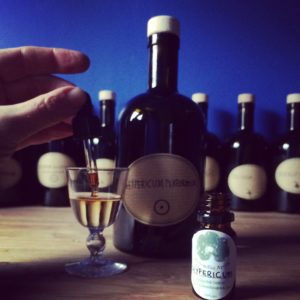
[:en]Prepared on the Solar Return of St John the Baptist the 24th of june.
![]()
St John´s wort is used for melancholia, seasonal affective disorder (SAD) and is also good for mental burnout.
It is a stomach normalizer applicable in both hyperacidity and hypoacidity. When the gut is in balance – intuitions are stronger.
![]()
St John´s wort lights up the solar plexus chakra, the inner sun. The signature of this flower is also indicating this, the yellow color and it´s rays of light-looking little antennas in the centre of the flower. It gives a centered energy, joy, focus and has a powerful effect on the nervous system. It strengthens the animal instinct in the gut, to trust the intuition.
![]()
The petals are dotted with little perforations. This indicates another one of Hypericum Perforatum´s properties: It is used for leaky energy. When energy is leaking from us, it becomes easier to pick up on the energy of others, making us feel tired and drained. This magical plant fills up these energetic holes and centers us so our energy stays within us and we no longer pick up on unwanted vibes or fall under the domination of untoward people.[:sv]Elixiret är skapat på Johannes Döparens födelsedag den 24:e juni.
![]()
Johannesört används vid melankoli, vinterdepression och med fördel vid utbrändhet. Johannesört verkar balanserande på syra/bas-balansen i magen.
När magen är i balans har vi även en stark magkänsla att navigera efter.
![]()
Johannesörten lyser upp solarplexus-chakrat, vår inre sol. Johannesörtens signatur är dess gula färg och de små spröten som ser ut som solstrålar. Den här örten ger en centrerad energi, glädje, fokus och har en kraftfull effekt på nervsystemet. Den stärker våra naturliga instinkter och vår tillit till vår egen intuition.
![]()
En annan av Johannesörtens signaturer är perforeringarna i kronbladen. Denna signatur berättar att Johannesört är bra vid energiläckage. När vi tappar energi plockar vi lättare upp andras energier och det tröttar och sliter ut oss. Denna magiska ört fyller liksom upp hålen i auran och centrerar oss så att vi behåller vår energi inom oss själva och inte längre fångar upp sånt som inte har med oss att göra och gör oss mindre påverkbara att hamna under energitjuvars manipulation.[:]
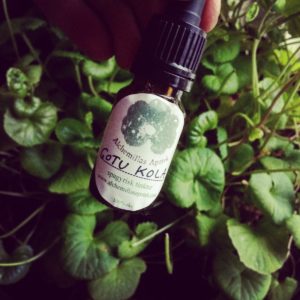
[:en]
“Yoga exists in the world because everything is linked.” – Desikashar
![]()
Gotu Kola is anti-inflammatory and a circulatory stimulant. It is also an excellent connective tissue tonic, aiding with arthritis, ulcers, skin problems, strengthening hair, skin and nails. Connective tissues connect all things in the body – muscles to bones, holding organs in place, and giving the body its mobile structure.
![]()
It is used by many yogis to enter a state of non-dual awareness and deepen their meditation. It promotes a very high level of clarity not of mind, but of awareness of the mind – which in turn clarifies the thought processes. Gotu Kola helps to increase circulation to the brain, balance its hemispheres, improve memory, intelligence, and calms the mind. It is a rejuvenative tonic for the nerves, brain cells, and the adrenal glands.
Gotu Kola is very much connected to the crown chakra. It is an adaptogen and a brain-tonic.
![]()
The connection between the crown and connective tissue is that this herb helps us to understand the unity of all things, how everything in our body is interconnected, and how everything in the universe is interconnected too.[:sv]
Yogins ört
“Yoga existerar i världen , eftersom allt är sammanlänkat.” – Desikashar
![]()
Gotu Kola är antiinflammatoriskt, främjar cirkulationen och är även utmärkt för lederna. Den kan hjälpa vid artros, magsår, hudproblem, stärka hår, hud och naglar.
Bindväven förbinder skelettet till musklerna, håller de inre organen på plats och ger kroppen dess mobila struktur.
![]()
Gotu Kola används av yogis för att träda in i ett odualistiskt medvetande och fördjupad meditation. Den främjar klarhet av medvetandet av sinnet, på en metanivå. Detta påverkar i sin tur klarhet i tankeprocesserna. Gotu Kola ökar cirkulationen till hjärnan, balanserar hjärnhalvorna, förbättrar minnet och de kognitiva förmågorna så som intelligensen och verkar lugnande. Gotu Kola påverkar kronchakrat och är en adaptogen, en så kallad brain-tonic.
![]()
Gotu Kolans samband mellan kronchakrat och kroppens bindvävnader handlar om att denna ört har med alltings enhet att göra, hur allting i våran kropp är sammanbundet och hur allt i vårat universum är sammanlänkat likaså.[:]

[:en]Aka “Stronger Brahmi”, “Water Hyssop”, “the divine great drug”, “Herb of Grace”
![]()
Brahmi is a nootropic herb and its uses in neurological and psychiatric disorders are well recognized. Bacopa is a nerve tissue builder and cardio-tonic, it relieves stress, aids respiratory tract problems such as asthma, bronchitis, cough but foremost it is used for nervous exhaustion, to improve memory and as a “brain-food”.
![]()
Bacopa increases comprehension, concentration and recollection. In India it is used for ADHD. It gives focus to scattered minds. It gives overview instead of millions of separated details, it makes you see the patterns.
![]()
The ancient Ayurvedic sages, who were also great physicians, revealed Brahmi’s role in promoting Medhya (intellect), Ayushya (longevity), Rasayana (rejuvenation), Prajnasaktivardhana (intellectual power), Hrdaya (Heart), Majjadhaty Rasayana (nervous system rejuvenation), Balya (strength, especially mind), Jivaniya (life energy), Nidrajanana (sleep), Dhana (wealth), Svara (voice), Varna (complexion) and Anuloma (redirecting the flow of vata downwards).
It is not for nothing Bacopa is referred to as The Divine Drug.
[:sv]Brahmi, Den gudomliga medicinen, Nådens Ört
![]()
Bacopa är en nootropisk ört och dess användning för neurologiska och psykiatriska obalanser är väldokumenterade. Bacopa bygger nervvävnad, stärker hjärtat genom att den stödjer oss i att hantera stress, är bra vid luftvägsproblem såsom astma, bronkit, hosta. Men den används främst vid utbrändhet, för att förbättra minnet och som en “brain-food”.
![]()
Yogis och andra som mediterar använder Bacopa för att öka förståelsen, koncentrationen och minnet. I Indien används Bacopa av de som diagnosticeras med ADHD med mycket goda resultat. Bacopa är bra när man känner sig splittrad och har svårt att fokusera. Den ger översikt i stället för miljontals separata detaljer och ger stöd att skönja mönstret.
![]()
I de tusenåriga ayurvediska texterna lovordas Bacopas stödjande egenskaper för Medhya (intellekt), Ayushya (livslängd), Rasayana (föryngring), Prajnasaktivardhana (intellektuell kraft), Hrdaya (hjärta), Majjadhaty Rasayana (föryngring av nervsystemet), Balya (styrka, särskilt sinnets), Jivaniya (livsenergi), Nidrajanana (sömn), Dhana (rikedom), svara (röst), Varna (hy) och Anuloma (omdirigera flödet av vata nedåt). Det är inte för inte Bacopa kallas för den gudomliga medicinen.[:]

[:en]Amazonian dream teacher.
![]()
Guayusa is a cousin plant to Yerba Mate, and elicits similar benefits including natural caffeine that energizes without the resultant jitters or crash associated with other caffeinated drinks like coffee. Guayusa is full of antioxidants, more so than in green tea. Guayusa aids in digestion and boosts metabolism.
![]()
Guayusa, or “Wayusa,” is known within the Kichwa community to awaken the spirit, bring peace to the body, and stimulate the mind. It will also induce vivid and lucid dreaming if you drink it at night. Legend has it, that the Kichwa tribe prayed for a plant that could help them connect to the dream world. When they awoke in the morning, there was a guayusa plant in front of them.
![]()
The Spirit of Guayusa is an amazing teacher! I decided to turn these magical leaves into a spagyric tincture, extracting in a strong decoction from snow and maceration in 40% alcohol and it turned out very well! I transformed the snow when the new moon was in pisces into a strong Guayusa tea to help us integrate the teachings of our dreams.
[:sv]Drömfångaren och vägvisaren
![]()
Guayusa är en kusin till Yerba Mate, och ger liknande effekt, inklusive naturligt koffein som ger energi utan att man blir skakis eller att magen krashar vilket andra koffeindrycker kan resultera i. Guayusa är proppfull med antioxidanter, betydligt mer än grönt te, till exempel.
Guayusa är bra för matsmältningen och ökar förbränningen.
![]()
Guayusa eller “Wayusa” som det uttalas används av Kichawafolket för att väcka anden, ge frid till kroppen och stimulera sinnet. Guayusa ger också livliga drömmar eller lucida tillstånd om man tar elixiret på kvällen innan man lägger sig. Legenden berättar att Kichawafolket bad om att träffa en växt som kunde hjälpa dem att stärka kontakten med drömvärlden. Nästa morgon fann de Guayusaträdet framför dem.
![]()
Guayusas ande är en otrolig lärare! Jag bestämde mig för att transformera dessa blad till en spagyrisk tinktur och valde att göra en dekokt av fullmånebelyst snö när månen befann sig i fiskarnas tecken. Jag gjorde parallellt en tinktur och sedan fullföljde jag den spagyriska processen och kombinerade dessa extrakt. Fiskarnas arketyp stödjer oss i att integrera drömmarnas lärdomar.[:]
